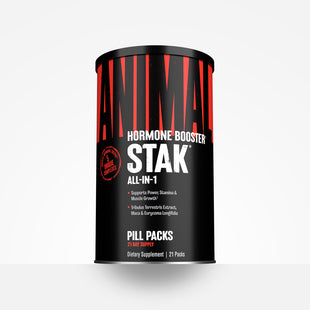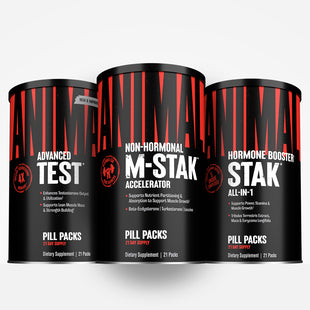It is said shows are won from the back, but without a set of wheels you won’t get too far in the upper echelon of competitors. When I see a guy with some serious quad mass, I immediately know that this is someone who trains hard—because quad training can be soul sucking. A hard squat session creates such a large cardiovascular demand that blood is pulled out of the upper body and nausea creeps in. It takes some fortitude to push through that type of training to build big quads. This kind of development demands respect. The question becomes how do we make the most out of our quad training and what to do if our quads suck?
Why Do My Quads Suck?
Let’s just not even touch on genetics here because we can’t change that, but I usually see poor stimulus in training. Mechanical tension is the main driving stimulus to create a hypertrophic response. This is tension at the fiber level (bone to bone); do not think about external load. So what are ways that we lose out on the stimulus?
Poor quad stimulus can result from:
- Incorrect exercise choice
- Poor exercise order
- Poor execution (form, tempo)
- Lack of or too much relative effort
- Lack of absolute effort
- Doing too little or too much per session
- Not enough rest between sets
Exercises on paper can look great, but once I see how they are performed then it goes all wrong. It also might just be the wrong exercise in general for the person. Here are five tips to improve your quad session for better tension stimulus.
1. Pick the Right Squat for You
The squat is the meat and potatoes of a great quad program. This is your chance to train the quad through the full range of motion and load the quad in the stretch position. These two things combined create a high amount of bone-to-bone mechanical tension. It’s just a matter of picking the right squat for you.
Three things to look at in a squat pattern:
- Alignment
Does the squat pattern allow you to get in position to move the most at the knee joint and limit loading on muscles you don’t intend to train? Stance width and toe position should be set up to allow that maximum range of motion at the knee. No squat pattern or stance width will train more quad sweep than another. The less hip travel and more knee travel you can get, the more quad you will bias. - Range of Motion
If you have a machine or squat that can align well with your mechanics, does it allow the full range of motion? What is the limiting factor? Can we adjust it to improve that? Maybe this means performing a heel elevated squat for ankle range of motion, adding blocks to a hack squat so you can go lower, or even using a safety squat bar to stay more upright. - Bracing and Stability
If you are unable to brace and stabilize a squat pattern, you are not going to be able to maximally output that bone-to-bone fiber tension. So if you are wobbly on a back squat, you might need to move to a smith squat. Need more bracing on a smith squat? Try a hack or pendulum squat. Neither option is wrong but is just based on what you need.
What are my top squat picks?
- Pendulum Squat
This has the largest range of motion, requires low bracing, and allows some adjustability. - Hack Squat
This squat’s range of motion will depend on the individual, requires low bracing, and is not very adjustable for alignment. - Safety Bar Squat with Heel Elevation
This is the most technical squat and will require a high degree of bracing, but provides the greatest potential overall growth (erectors, glutes, and quads).
2. Leg Pressing for Quads
Fans of the leg press are going to ask if they even need to squat for big wheels. My answer is no, not necessarily. While there are some drawbacks and benefits to a leg press, both the squat and leg press really have their application in a program. The leg press requires a much smaller range of motion for the quad since you are already in a hip flexed position. It does train the quad closer to the mid to shortened end range which might not be as growth stimulating. However, we can see less sheer force at the knee in the leg press over the squat, so many prefer it first before going into a squat as a secondary lift. Also, the leg press allows us to get in a very braced position and not load the spine like the squat does. So it is not as systemically taxing as a squat and can allow us to get in some extra quad work.
A big myth to bust on the leg press is that in no way can it train the hamstrings. A high and wide leg press gets more glutes and adductors involved, not hams. As the knee and hip bend, the hamstring does not change in length. Most people are feeling their adductors work and confuse the sensation with hamstrings. To bias the quads, we want the feet as low as possible and around shoulder width. Just like with the squat, you want a set up that allows maximum knee travel without the butt lifting out of the seat or your heels pulling off the platform.
3. Leg Extension for Full Development
The quads consist of 4 main muscles: the vastus lateralis, medialis, intermedius, and rectus femoris. Only the rec fem performs knee extension and hip flexion. This muscle becomes more active in leg extensions, sissy squats, and the split squat. Studies have shown that squats and leg press alone contribute very little to rec fem growth. This indicates that you should perform an isolation movement or a split squat variation to fully develop the quad. This is also a way to add more direct quad stimulation if we are too drained to do additional sets of squats and leg press but still need the extra volume. Knee pain with extensions is a common issue which can be resolved with alignment. Keep the knee aligned with the pivot point of the machine and make sure the knee points up to the ceiling and not out to the side as this binds the joint. Personally, I opt to do them single leg, so my feet do not turn out as I lift, thereby causing fewer knee issues.
4. What About My Single Leg Squat?
The single leg squat I mentioned for rec fem development is a very viable option. It is basically the exact pattern as a bilateral squat, so you do not get anything much different out of the front leg. You can make your split squat very quad dominant by elevating the front leg and bringing the back leg on the ground closer to the front leg to help keep your torso upright.
The issue here is bracing and stability. With lack of bracing and stability, the ability to output with enough weight can be a limiting factor as you get progressively stronger. In that instance, I lean more toward a single leg press if you do want unilateral work. If a size imbalance is present, train the weak or smaller leg first and match the reps on the strong/bigger leg. One difference though is you can train the rec fem on the back leg fully lengthened. Again, be careful here as I personally have torn my rec fem trying to train high effort at the end of a workout. This is not a great exercise to put at the end of your session for safety reasons. If you do utilize it, I like using the smith machine or a safety squat bar so that you can grab out in front of you for balance.
5. Exercise Order Matters…Sort Of
Although there are studies that show hypertrophy is all the same no matter the order of lifts, there is a practicality to that order that matters for many. You have guys whose lower back fatigues before their quads if they squat first, so doing a leg press first and squat second makes the quad in the squat a limiting factor. There are also those who need to warm up their knees before any compound work, so isolation work might need to come first. The big picture about exercise order with the goal of quad growth is that we want to design a training session that puts priority on quads the entire session. An ideal set up would be a squat first, since it has the most hypertrophy potential and is the most demanding, then move down to more braced stable exercises, and then last to isolation movements. There’s nothing wrong with doing it in reverse. Again, it just depends on what you need to make the session quad biased.
Quad Training Template:
*RIR stands for “reps in reserve” or how many reps before you reach muscular failure.
*Only work sets are listed, not warm up sets.
*Set volume is just an example—you may need more or less depending on recovery capacity.
1. Quad Activation/Warmup/Primer
Leg Extension:
- 2 sets x 15 reps 1 second holds peak contraction @ RIR 5
2. Compound Exercise 1: Squat Variation
Smith Machine Squat, Hack Squat, Pendulum Squat, etc.:
- 2 sets x 8 reps
- 1 set x 12 reps @ RIR 1-2
3. Compound Exercise 2: Back Braced or Unilateral Compound Variation
Leg Press Variation (45 Degree Leg Press, Pendulum Leg Press, Front Foot Elevated Split Squat):
- 1 set x 15 reps
- 1 set x 10 reps @ RIR 1
4. Isolation Exercise 1
Leg Extension or Sissy Squat:
- 1 set x 20 reps
- 1 set x 15 reps
- 1 set x 10 reps @ RIR 1-0
The road to tear drops and sweeps for days has been paved for you. Take the tools I laid out and get to work. Remember to be precise with training the intended muscle and take it to that high-effort intensity level. These tips will have you growing quads in no time.




















